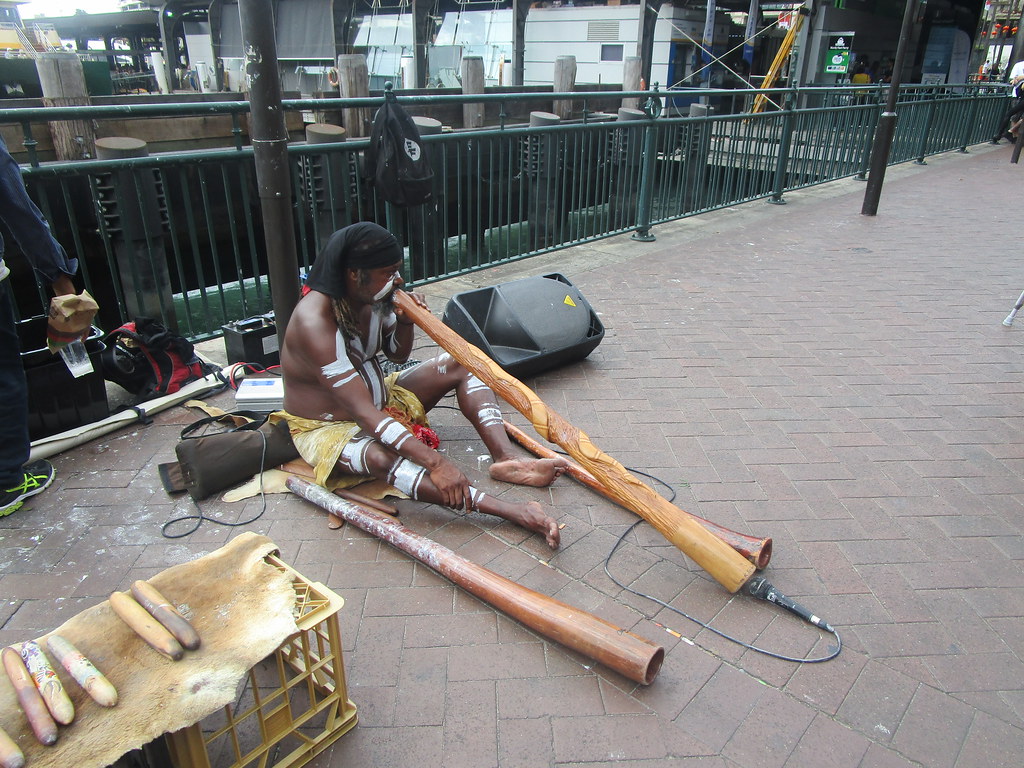The plight of the Aboriginal Australians Must Never be Forgotten
You’ve learnt about the awful treatment of the native Americans, but what about the indigenous peoples all the way down south in Australia?
Living half of my life in Australia was an absolutely wonderful experience. My nation is a diverse, multiethnic country where children of all backgrounds live together in harmony. So much internationalization has enriched and diversified my home over the years, but with growth often comes loss. In this case, the lost culture of the indigenous people of Australia: the Aborigines.

Face of Art Photo courtesy of Leonard J Matthews
Aborigine culture was a large and memorable part of my childhood, largely because of the way it was incorporated into my education in Australia. I even had a teacher who had aboriginal heritage. During class reading time, we would listen to fascinating ancient stories and look at beautiful Aborigine artwork on the pages of the book. Even more wonderful was when my school invited Aboriginal people to perform dances and play the iconic digeridoo, an Aboriginal wind instrument. However, my favorite memory of all was of ochre, which is essentially rock paint. The process of ochre consisted of smashing colorful rocks into fine bits, mixing them with water, then using your mouth to spray it on surfaces, almost like spray paint. My younger self was inspired by the artistic process, and during lunchtime I would smash rocks with my friends and mixed the pieces with water to create paints which we would apply onto trees, or larger rocks.
I am proud to have experienced such a vibrant culture widely unknown to this world, all thanks to my primary education in Australia.
However, the foundation of Australia was built on the subjugation of these indigenous people– something my school failed to teach us. Before the arrival of Lt. James Cook, the captain of the Royal Navy in 1770, Aboriginals lived in tribal, hunter-gatherer societies and had no awareness of national identity for 60-80 thousand years. At the time there were as many as 500 tribes, 200-250 languages were spoken (with only 70 being spoken today, in critical condition), and they utilized many sophisticated hunting methods such as using disguises of bushes, feathers, or lures.
When the Europeans arrived in the nation, the Aboriginal lifestyle and culture was decimated. As Europeans began to expand inland, they disrupted ancient territories, sites and boundaries, leading to violent conflict. These conflicts significantly depleted the Aboriginal population, and diseases brought by the Europeans only worsened it. Growing concerns for the Aboriginal population led to laws “protecting” the people, which served the ultimate purpose of putting them in reserves and forcing them off of the land. Charles Darwin said this about his trip to Australia in response to the condition of the Aboriginals after European conquest: “Death pursues the native in every place where the European sets foot.”
The most devastating of the violence would have to be the genocide of the 6,000 Aboriginal Tasmanians. Men were mutilated, children were kidnapped and used as servants, and women were used as concubines. The remaining few hundred of the population were round up and sent off to prison camps, where they suffered from malnutrition, disease and abuse. By 1869, an Aboriginal woman named Truganini, one man and another woman were the last members of the native Tasmanians.

Queen Mary Ann and Trucanini- the last Tasmanian aborigines Photo Courtesy of Aussie~mobs
More recently, a period known as the Stolen Generation in the late 1900s, the government forcibly took indigenous children under the justification of assimilation and the superiority of white culture. Children were considered to be more adaptable to white culture, especially those who were “half-castes,” or mixed race because of their lighter skin color. These children were subject to physical and sexual abuse, neglect, and the program did nothing to help them integrate into Australian society. Many of the victims were given compensation, but money can never return a stolen childhood.
Of course, some progress has been made to acknowledge past atrocities. For example, former Prime Minister Kevin Rudd made a famous “Sorry” speech, in which he apologized for the pain caused during the Stolen Generation era, which was well received by the Aboriginal community. However, simple apologies or compensations are not enough to return dignity to a community still suffering from intergenerational trauma.
Nakkiah Lui, an actress of Aboriginal descent, speaks on the trauma that her family has faced: “I’m an Aboriginal woman in her 20s… but it’s only four generations back that my family felt the direct consequences of foreigners invading our land. There’s my great-great grandmother, who survived a massacre; my great grandfather, who was forced back to the mission after his father died and wasn’t allowed to own land; my grandfather, who was given “dog tags” dictating he was an “honorary white man” after he returned from being a prisoner of war in World War II; my mother, who was encouraged to not finish high school because she was Aboriginal…”
Despite these atrocities, Aboriginals nonetheless feel that they have a sacred connection with the land. Jenny Munro, an Aboriginal and member of the Wiradjuri Nation, expressed: “…from time immemorial, we believe as Aboriginal people, Australia has been here from the first sunrise, our people have been here along with the continent, with the first sunrise. We know our land was given to us by Baiami, we have a sacred duty to protect that land, we have a sacred duty to protect all the animals that we have an affiliation with through our totem system.”
The grave mistakes of our colonial forefathers cannot be taken back. Our nation, like many others, is built upon the trauma of the oppressed. We must shine a light on the culture of the Aboriginals, not only to remember the atrocities committed but also to unite as a nation to revive indigenous culture.
Featured Image- Aboriginal man playing the Digeridoo Photo courtesy of 7beachbum
By Wesly Wong

